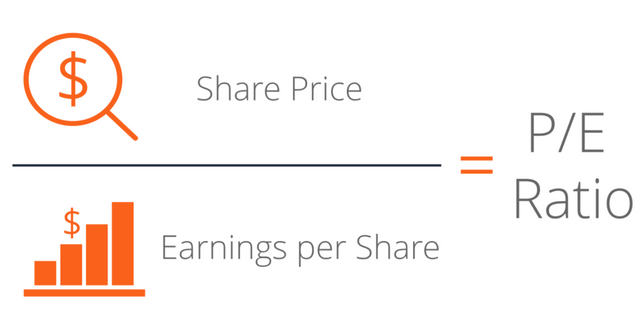Price-Earnings Ratio - P/E Ratio HOW TO HELP IN EARNING
Q. What is the 'Price-Earnings Ratio - P/E Ratio'
The price-earnings ratio (P/E ratio) is the ratio for valuing a company that measures its current share price relative to its per-share earnings. The price-earnings ratio is also sometimes known as the price multiple or the earnings multiple.
The P/E ratio can be calculated as: Market Value per Share / Earnings per Share
BREAKING DOWN 'Price-Earnings Ratio - P/E Ratio'
In essence, the price-earnings ratio indicates the dollar amount an investor can expect to invest in a company in order to receive one dollar of that company’s earnings. This is why the P/E is sometimes referred to as the price multiple because it shows how much investors are willing to pay per dollar of earnings. If a company were currently trading at a multiple (P/E) of 20, the interpretation is that an investor is willing to pay $20 for $1 of current earnings.
Price-earnings ratios are the most popular way to assign a relative value to a stock, but there are many other techniques that investors use to make decisions. If you're interested in learning more about investing, Investigator's Investing for Beginners Course provides an in-depth introduction to the topic guided by a Chartered Financial Analyst. You'll learn the basics, how to manage your portfolio, techniques for reducing risk, and how to make informed decisions in over 75 lessons containing on-demand video, exercises, and interactive content. ]
To calculate the P/E ratio, the earnings per share (EPS) must be known. EPS is most often derived from the last four quarters. This form of the price-earnings ratio is called trailing P/E, which may be calculated by subtracting a company’s share value at the beginning of the 12-month period from its value at the period’s end, adjusting for stock splits if there have been any. Sometimes, price-earnings can also be taken from analysts’ estimates of earnings expected during the next four quarters. This form of price-earnings is called a projected or forward P/E. A third, less common variation uses the sum of the last two actual quarters and the estimates of the next two quarters.
Let's calculate the P/E ratio for Wal-Mart Stores Inc. (NYSE:WMT), as of November 14, 2017 when the company's stock price closed at $91.09. The company's profit for the fiscal year ended January 31, 2017 was $13.64 billion and its number of shares outstanding is 3.1 billion. Its EPS can be calculated as $13.64 billion / 3.1 billion = $4.40. Wal-Mart's P/E ratio is, therefore, $91.09/$4.40 = 20.70.
You can track the P/E ratios for the stocks in your portfolio or individual stocks by adding them to your own 'Watchlist'. Here we list the top and bottom three companies in the S&P 500 by P/E ratio. This list updates daily based upon movements in the stock prices, so adding stocks you are interested in to your Watchlist is the best way to keep an eye on them.

✅ @knowledgeexpert, I gave you an upvote on your post! Please give me a follow and I will give you a follow in return and possible future votes!
Thank you in advance!
Hi! I am a robot. I just upvoted you! I found similar content that readers might be interested in:
https://www.investopedia.com/terms/p/price-earningsratio.asp